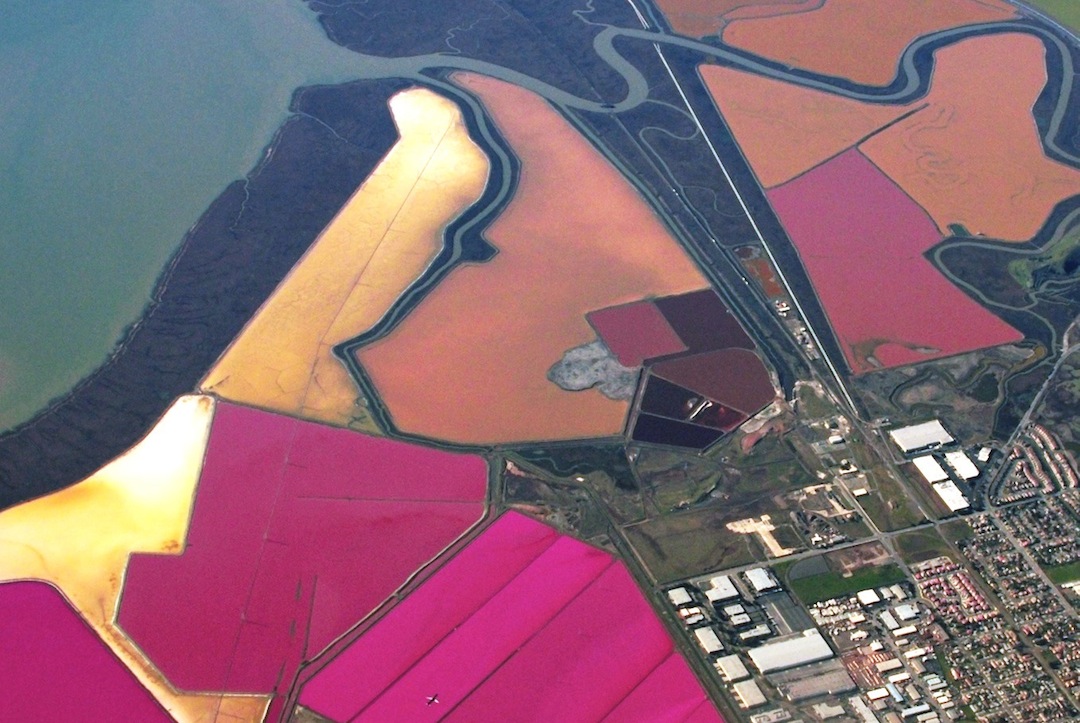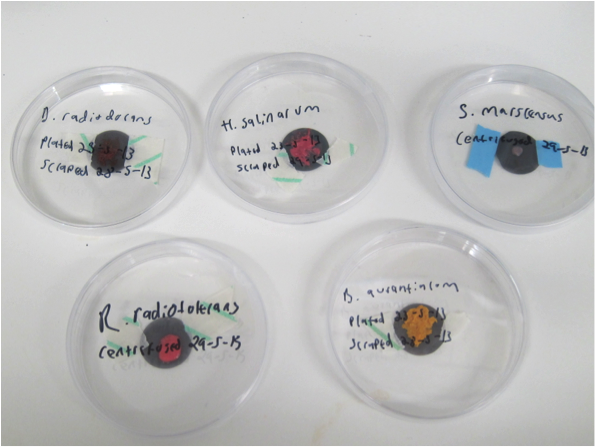 |
|
|
Spring 2014 Can Non-Photosynthetic Life Be Seen from Space?An Astrobiology Research Rotation Report
By Eddie Schwieterman

A biosignature is a tell-tale sign that life is present, or that it has modified its environment in some way. The manner in which photosynthetic organisms absorb and reflect light from the Sun is one indication that life is present on the Earth. Many researchers have cited the so-called “red edge” effect, which is a sharp contrast between the efficient absorption of visible light and reflection of most near-infrared light by vegetation, as a potential biosignature that can be searched for in the spectra of alien planets. 
We often think of photosynthesizers (and specifically oxygenic photosynthesizers like vegetation and algae) as being the most detectable form of life, because we presume they will be the most abundant. However, pigmentation has evolved for many purposes, including adaptation to extreme environments, and there are examples of macroscopic environments where other kinds of pigments (such as carotenoids) dominate, like hypersaline lakes and ponds. 
Before my arrival in Edinburgh, we selected the microbes we wanted to culture and study. After I arrived, I learned several techniques and methods in microbiology, including the preparation of culture media, incubation and culturing of microorganisms in liquid and plated cultures, sterilization of lab equipment, anaerobic techniques, use of an anaerobic chamber, and reflectance and transmission spectroscopy of samples. We measured the reflectance spectra of colonies of almost a dozen different species of microorganisms, all of which were non-photosynthetic or anoxygenic photosynthesizers. Additionally, I folded in my experience working with radiative transfer models to simulate the synthetic spectrum of an Earth-like planet with a surface dominated by a non-photosynthetic pigment (such as the case of hypersaline ponds in limited locales on Earth). 
In addition to being professionally valuable, I found this experience incredibly beneficial on a personal level, in part because I never had the opportunity to study abroad as an undergraduate. I appreciated the chance to see the United Kingdom, interact with astrobiologists from the international community, and work on such an interesting and compelling interdisciplinary project! About the author: Eddie Schwieterman is a fourth-year Dual-Title Astronomy and Astrobiology PhD student at the University of Washington and a member of the NASA Astrobiology Institute's Virtual Planetary Laboratory, which is headquartered at the University of Washington. Photos (from top to bottom): |
|

